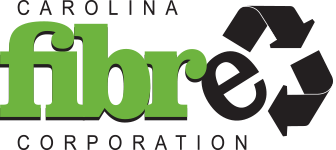February may be the month dedicated to love, but it doesn’t have to be limited to your significant other. As a supporter of sustainability and an enhanced ecosystem, Carolina Fibre looks for ways in everyday life to show love to our earth and protect the environment. And one of our favorite ways is through recycling.
According to a new report by the research firm Verisk Maplecroft, the average American produces 1,704 pounds of garbage per year, roughly three times the global average. These staggering number showcase that we need to fall in love with recycling. In addition to reducing carbon emissions, recycling has many benefits. Keep reading to find out about five more.
Increases property value.
Recycling promotes a healthy community and, in turn, can increase property value.
Communities that recycle will reduce the need for local landfills. Landfills will lower property values because nobody wants to live near a garbage dump. The more you and your neighbors recycle, the fewer landfills your city will need.
The little bit of effort it takes to separate and recycle your trash each week will eventually pay off big for everyone in the community.
Saves energy.
Tossing an aluminum can in the trash takes less than a second. Reusing a can takes the same amount of time and has more benefits. Did you know that it takes twice as much energy to burn plastic as it does to recycle it? It also takes 64% more energy to make paper than recycling and reusing it.
Recycling saves energy by reducing or eliminating the need to make materials from scratch. Making products from scratch is labor-intensive and expensive. Using recycled materials instead of pulling new natural resources, manufacturers can make the same products with less energy and expense.
Recycling creates jobs.
Plants and industries are required for effective recycling. If we were to ramp up our efforts, we could create ten times more jobs than landfill management.
According to Eco-cycle, jobs are created in:
- Collecting, processing, and preparing materials.
- Making new products from recycled materials. Your recyclables then head to manufacturing facilities that use recycled feedstocks, such as paper mills and plastic manufacturing facilities.
- Reuse and remanufacturing. Some discards are sorted and fixed up to be used again through computer refurbishers, thrift stores, and auto salvage yards.
[Click here to learn how a recycling program can help your business and save you money!]
Ensures a sustainable future for all.
There is only so much the environment can offer with its limited natural resources. Recycling ensures that we minimize the immediate effect on the environment and give it time to recover while creating sustainable habits.
Reduces air pollution.
When companies choose to use recycled materials that come from paper products, plastics, and metals instead of using raw materials, they reduce the number of toxins released in the air.
Many people think that one person can’t make a difference, but when it comes to recycling, one person can make a huge impact. Recycling is a simple way to preserve our natural resources and protect our clean air and water – and of course, show love to mother nature.

 Father’s Day is just around the corner, and while we may have big things going on in the world around us, we must focus on a bit of normalcy.
Father’s Day is just around the corner, and while we may have big things going on in the world around us, we must focus on a bit of normalcy. Grocery shopping gets complicated. You can’t walk up and down the aisles without finding at least five varieties of one product, each claiming to be the healthiest, highest quality, supercharged item out there. So which one is the best option for you and your family?
Grocery shopping gets complicated. You can’t walk up and down the aisles without finding at least five varieties of one product, each claiming to be the healthiest, highest quality, supercharged item out there. So which one is the best option for you and your family?
 An energy audit provides information about how much energy homes consume and suggests what can be corrected to improve energy savings. The average family in the United States pays over $3,000 in utility bills per year and a thorough audit can cut that price in half. Energy assessments include checking insulation, leaks, ductwork and appliances. Request an audit from a professional technician to maximize energy efficiency and start saving money!
An energy audit provides information about how much energy homes consume and suggests what can be corrected to improve energy savings. The average family in the United States pays over $3,000 in utility bills per year and a thorough audit can cut that price in half. Energy assessments include checking insulation, leaks, ductwork and appliances. Request an audit from a professional technician to maximize energy efficiency and start saving money!